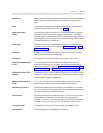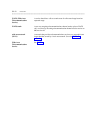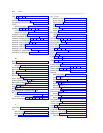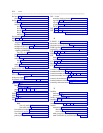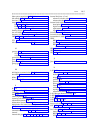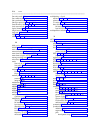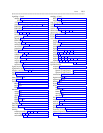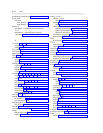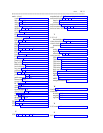INDEX IN-9
_ ______________________________________________________________________________________
_ ______________________________________________________________________________________
_ ______________________________________________________________________________________
signaling—Contd
address C-1
DTMF C-3
AVD 1-41
common channel signaling arrangement C-3
DMI BOS 1-27
DMI MOS 1-27
DX C-3
E&M 1-39, C-3, C-5, C-6
facility associated 1-28
ground start 1-39
inband 1-26
ISDN PRI 1-27
loop start 1-40, C-10
nonfacility associated 1-28
out-of-band C-11
proprietary 1-27
RBS 1-26
reverse battery 1-40, C-12
robbed-bit 1-26, 9-1
simplex C-13
single frequency C-12
stop-go C-13
supervisory C-13
touch-tone C-14
signal-inversion 1-21
signal/noise ratio 1-6
simplex communication 7-2, 7-5
slip B-2
SNA 9-5
SNA Gateway 8-19
speed 7-2
standard
BRI D-11
DCP D-16
PRI D-11
standards
analog D-5
ANSI D-5
digital D-5
EIA D-5
IEEE 8-13, D-5
ISDN D-5
StarGROUP 8-16
StarLAN 8-13
station numbering 4-4
steering
extension number 2-9, 4-4, 5-14, 6-23
multi-digit 4-4, 4-9, 6-23
node number 2-12, 5-8
steering—Contd
RNX 2-10, 5-14
single-digit 4-9
stop-go signaling C-13
strata B-4
stratum-4 B-5
stratum-4E B-5
subnet trunking 2-11, 2-14, 4-9, 5-14
supervisory signaling C-13
SW56 8-22
SW64 8-22
switch
analog 1-7
CAS branch 5-13
CAS main 5-13
circuit 7-7
digital 1-7
intelligent main 2-4, 4-4, 4-7, 5-9
main 2-2, 4-1, 4-7, 5-1, 6-23, C-11
packet 7-2, 7-7
satellite 2-2, 4-1, 4-8, 6-23
tandem 2-4, 4-7, 5-1, 5-2, 5-9, 5-14, 6-23
tributary 2-2, 4-1, 4-8, 6-23
switch-communications-interface 2-7, 6-1
synchronization
accuracy B-4
architecture
System 75 and Generic 1 B-11
System 85 and Generic 2 B-7
conclusions B-29
digital facilities B-1
engineering B-18
hierarchy B-3
layers B-4
levels
bit B-1
character B-1
frame B-1
message B-1
time-slot B-1
link B-1
misconceptions B-28
need for B-1
network B-1, B-18
plan B-29
primary reference B-4
secondary reference B-4
software operation, System 85 and Generic 2
B-9
sources B-28





